 |
 |
 |
| |
PrEP uptake and adherence among transgender women: findings from a randomized clinical trial of a multicomponent intervention (HPTN 091)
PrEP Uptake Over 85% in Big US/Brazil Transgender Woman Study
|
| |
| |
PrEP Uptake Over 85% in Big US/Brazil Transgender Woman Study
HIVR4P 2024, Fifth HIV Research and Prevention Conference, October 6-10, 2024, Lima
Mark Mascolini
More than 85% of 300 US and Brazilian transgender women agreed to start daily preexposure prophylaxis (PrEP) against HIV, regardless of whether they got randomized to receive extras like gender-affirming hormone therapy at the same place they went for PrEP [1]. Getting extra support also had no impact on adherence to PrEP.
An estimated 20% of 48,604 transgender women in 34 countries had HIV infection in a 2021 meta-analysis [2]. Among people older than 15 years in the whole population, being a transgender woman upped the odds of having HIV infection 66 times. Other work found most transgender women, around 80%, eager to use PrEP, but actual uptake and adherence hovered at a low 35% [3,4]. HPTN 091 investigators planned a randomized trial to see whether offering supportive measures beyond the standard care that goes with PrEP would induce more women to start PrEP and to adhere to PrEP better if they did start [5]. .
HPTN 091 enrolled transgender women at least 18 years old in 4 US cities (Houston, New York, Philadelphia, San Francisco) and 1 Brazilian site (Rio de Janeiro). Researchers offered all women PrEP with tenofovir disoproxil/emtricitabine (TDF/FTC) or tenofovir/alafenamide (TAF)/FTC then randomized them to an immediate group or a deferred group. Besides the standard care that comes with starting and using PrEP, the immediate group could also receive gender-affirming hormone therapy at the same site where they got PrEP care, plus 6 structured peer health navigation sessions.The deferred group could access these services starting only at trial week 26. The HPTN 091 team assessed adherence to daily PrEP by measuring intracellular levels of tenofovir diphosphate (TFV-DP), the active form of both TDF and TAF.
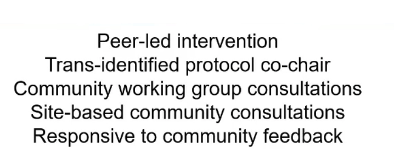
The 149 women in the immediate arm did not differ substantially from the 155 in the deferred arm in age (overall median 28 years), race and ethnicity (overall 54% Hispanic, 32% black, and 35% white), proportion who graduated from high school (79%), proportion with enough money for housing, food, and utilities (54%), proportion ever homeless (50%), or proportion who went to sleep hungry in the last 30 days (29%). Nor did the study arms differ in proportion who ever received gender-affirming hormone therapy (82% overall), used PrEP when entering the study (11%), or accepted PrEP when enrolling (73%).
Almost everyone in the immediate group (99%) completed at least 1 peer health navigation session, while only 1 person in the deferred group (1%) had a navigation session (P < 0.0001). But the immediate and deferred groups differed hardly at all in proportions who had other important outcomes: PrEP uptake (85% immediate and 87% deferred), self-reported PrEP adherence in the last 3 months (73% and 74%), TFV-DP levels above the lower limit of detection (73% and 77%), and TFV-DP levels indicating taking more than 4 pills weekly (50% and 51%).
The researchers speculated that these outcomes differed so little between the immediate and deferred groups partly because everyone in both groups had good peer support through the trial and could get needed referrals as easily as women in the immediate group.
References
1. Poteat T, Beauchamp G, Marzinke MA, et al. PrEP uptake and adherence among transgender women: findings from a randomized clinical trial of a multicomponent intervention (HPTN 091). HIVR4P 2024, Fifth HIV Research and Prevention Conference, October 6-10, 2024, Lima. Abstract PRC151.
2. Stutterheim SE, van Dijk M, Wang H, Jonas KJ. The worldwide burden of HIV in transgender individuals: an updated systematic review and meta-analysis. PLoS One. 2021;16:e0260063. doi: 10.1371/journal.pone.0260063.
https://journals.plos.org/plosone/article?id=10.1371/journal.pone.0260063
3. Malone J, Reisner SL, Cooney EE, et al. Perceived HIV acquisition risk and low uptake of PrEP among a cohort of transgender women with PrEP Indication in the eastern and Southern United States. J Acquir Immune Defic Syndr. 2021;88:10-18. doi: 0.1097/QAI.0000000000002726.
4. Teng F, Sha Y, Fletcher LM , Welsch M, Burns P, Tang W. Barriers to uptake of PrEP https://journals.lww.com/jaids/abstract/2021/09010/
perceived_hiv_acquisition_risk_and_low_uptake_of.3.aspx across the continuum among transgender women: a global scoping review. Int J STD AIDS. 2023;34:299-314. doi: 10.1177/09564624231152781. https://pubmed.ncbi.nlm.nih.gov/36793197/
5. Division of AIDS (DAIDS), United States National Institute of Allergy and Infectious Diseases. HPTN 091: Integrating HIV Prevention, Gender-Affirmative Medical Care, and Peer Health Navigation for Transgender Women in the Americas: A Vanguard Study. April 13, 2020. https://www.hptn.org/sites/default/files/inline-files/HPTN_091_Protocol_Final_Version_1.0_13Apr2020.pdf
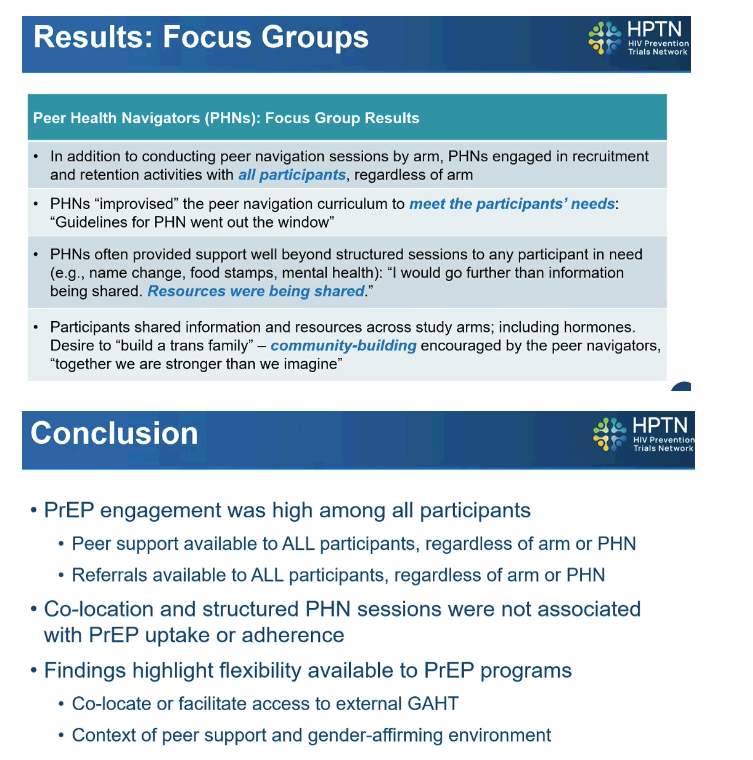
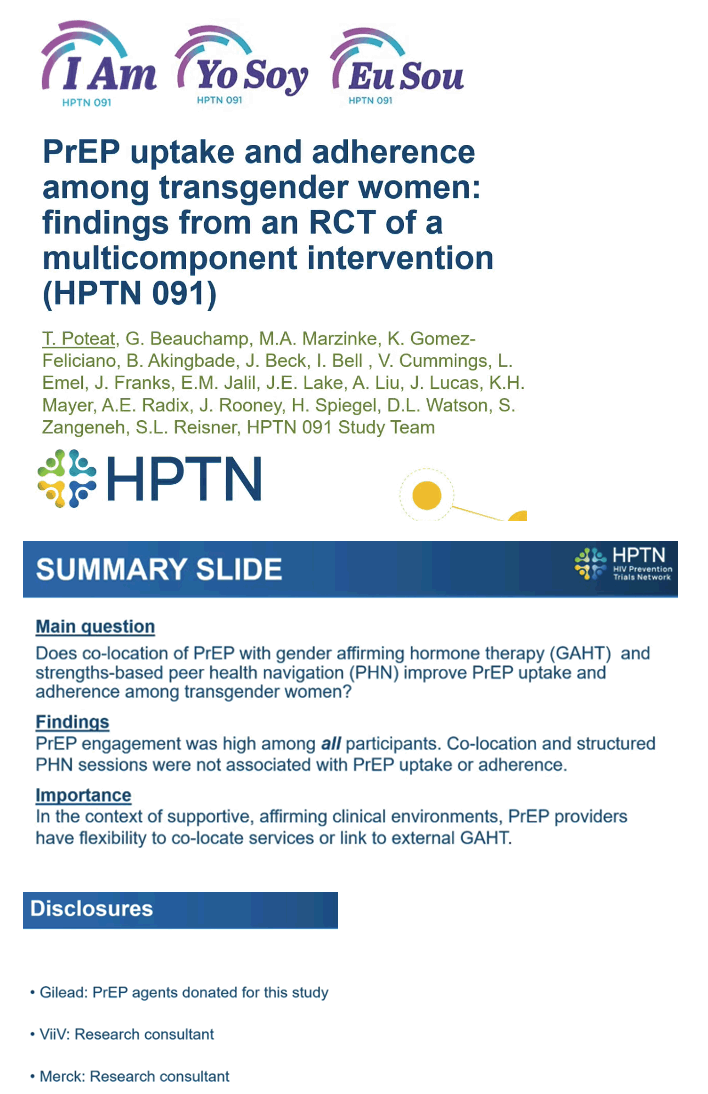
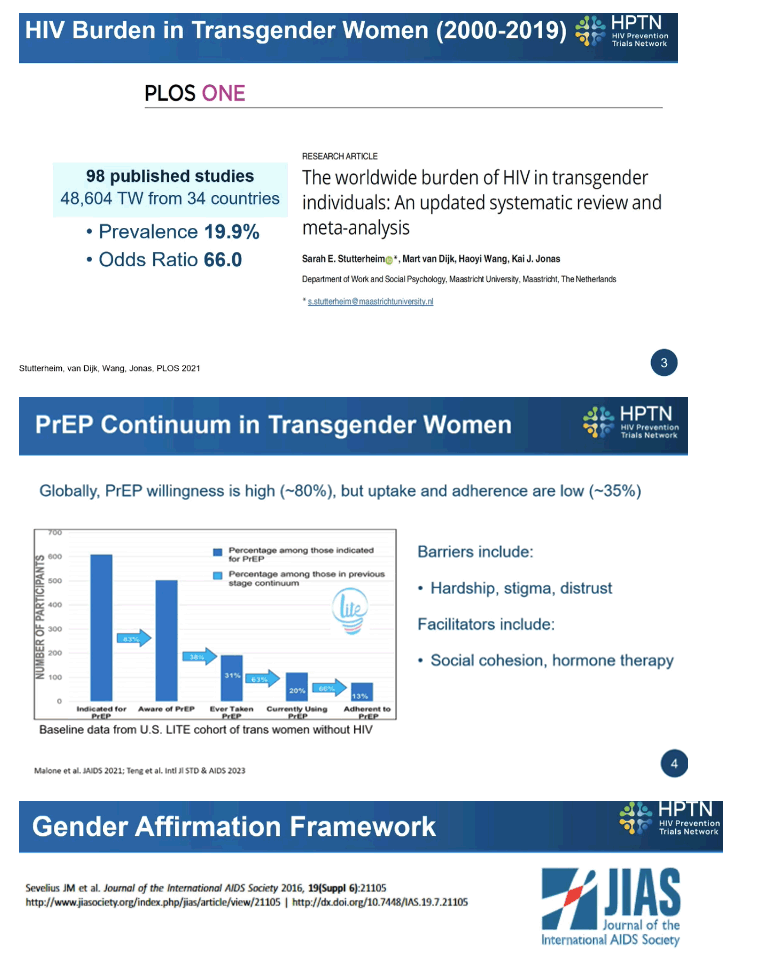
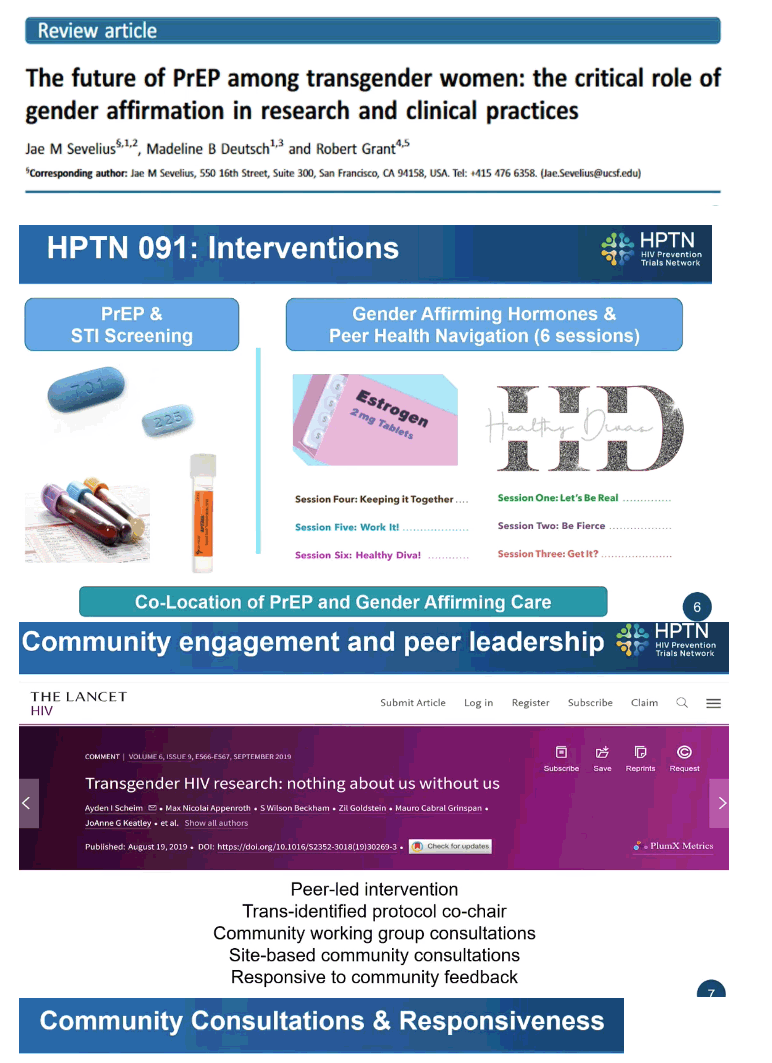
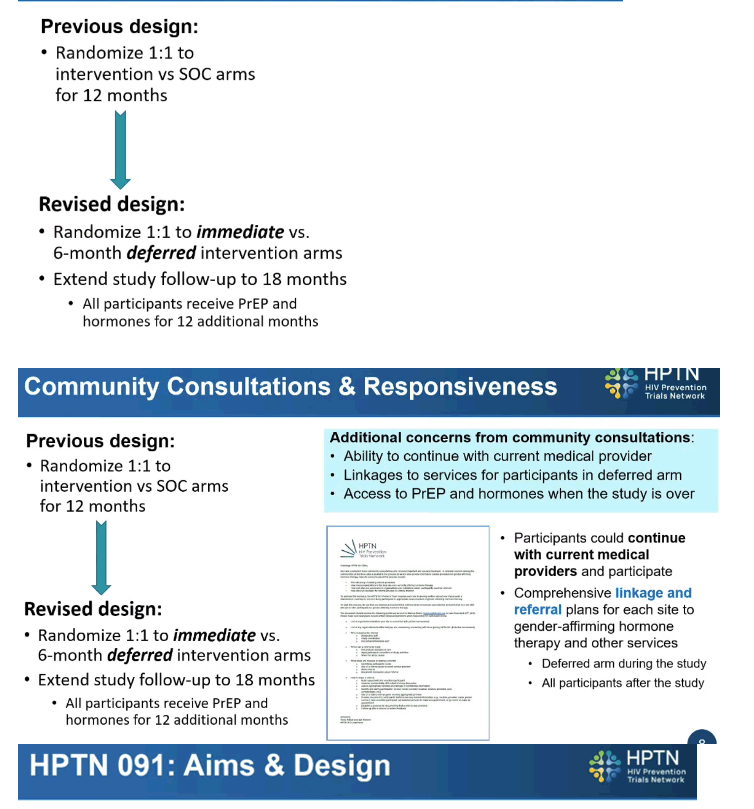
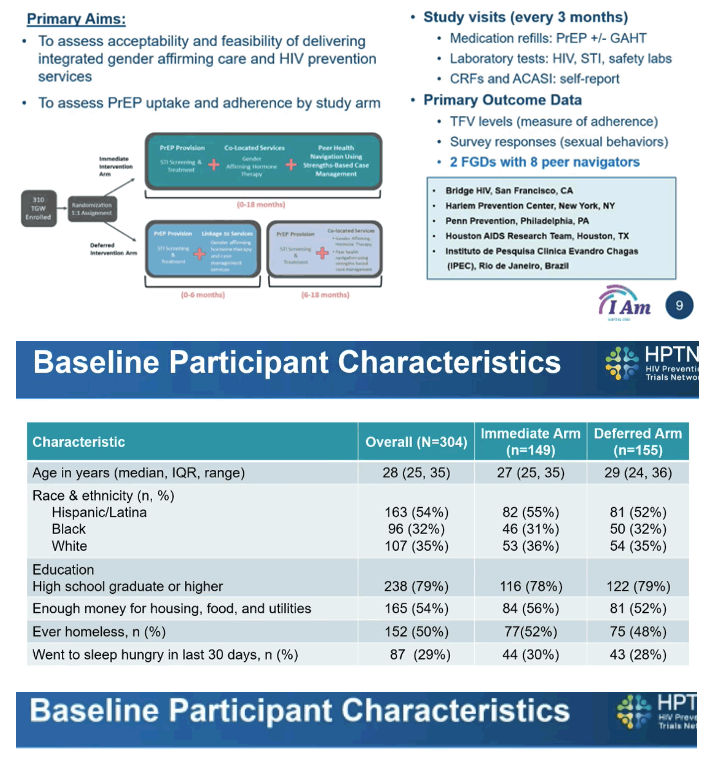
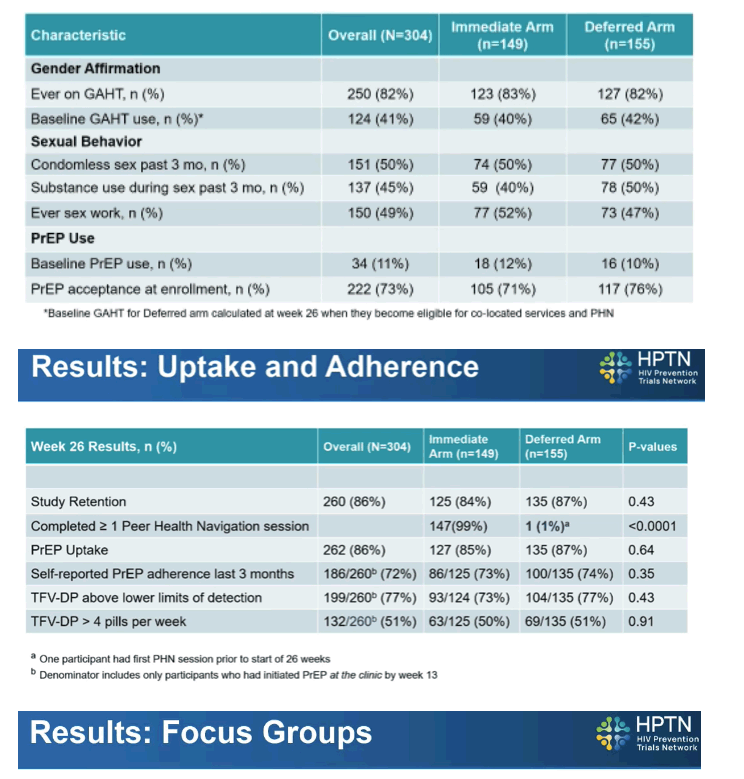
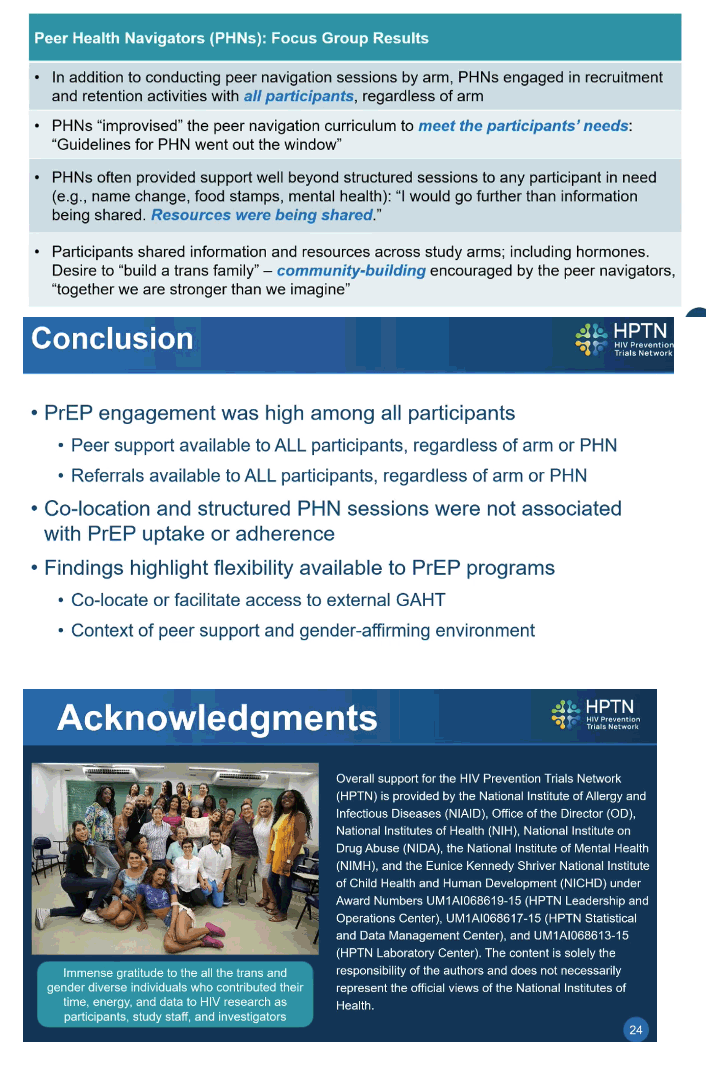
|
| |
|
 |
 |
|
|